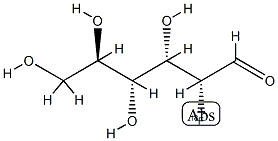Pharmaceutical Applications
18F is a positron-emitting radioisotope and is used in radiopharmaceutical imaging such as PET scanning.
Two compounds, namely fluorodeoxyglucose (18F-FDG) and derivatives of 18F choline, are under intense
clinical investigation and/or use.
18F-FDG is a glucose derivative that contains a radiolabel (18F) at the 2′ position replacing the hydroxyl
group.18F-FDG is administered intravenously and is used as an assessment of problems with glucose
metabolism, especially in the brain, often associated with epilepsy and in cancer. Areas where an increased
absorption of 18F-FDG are visible correlate to areas where an increased glucose metabolism is present.
18F-FDG is distributed around the body similar to glucose and is cleared renally. There are no known
contraindications known to 18F-FDG.
18F-FDG is the main radioimaging agent used in PET scanning. Examples include studies of heart, where it
is used to differentiate between dead and live tissue in order to assess the myocardium. In neurology, it can be
used to diagnose dementia, seizure disorders or tumours of the brain.18F-FDG is generally used to assess the
extent of the tumour in a cancer patient. Cancerous tissue is characterised by increased cell proliferation, which
requires energy, and therefore an increased amount of glucose. This leads to an accumulation of 18F-FDG in malignant tumours and allows judging the degree of metastasis formed. This information is important for any
surgical procedure and also for the initial assessment of the cancer stage.

